January 10, 2020
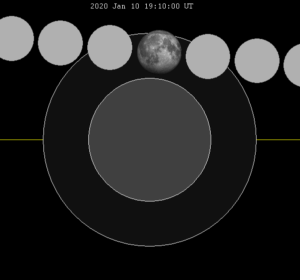
A penumbral eclipse of the Moon will occur on Friday, January 10, 2020 UT, lasting from 17:07–21:12 UT. It will be the first of four penumbral lunar eclipses in 2020. At maximum eclipse, 90% of the Moon’s disc will be partially shaded by the Earth, which will cause a slight shadow gradient across its disc; this subtle effect may be visible to careful observers. No part of the Moon will be in complete shadow.
What is a Penumbral Lunar Eclipse?
A penumbral lunar eclipse takes place when the Moon moves through the faint, outer part of Earth’s shadow. This type of eclipse is often mistaken for a normal Full Moon. The Moon shines because its surface reflects the Sun’s rays. A lunar eclipse happens when the Earth comes between the Sun and the Moon and blocks some or all of the Sun’s light from reaching the Moon.
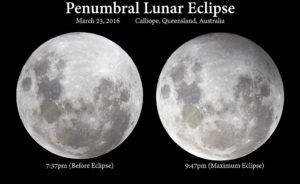
Imperfect Alignment
A penumbral lunar eclipse occurs when the Sun, Earth, and the Moon are imperfectly aligned. When this happens, the Earth blocks some of the Sun’s light from directly reaching the Moon’s surface and covers all or part of the Moon with the outer part of its shadow, also known as the penumbra. Since the penumbra is much fainter than the dark core of the Earth’s shadow, the umbra, a penumbral eclipse of the Moon is often difficult to tell apart from a normal Full Moon.
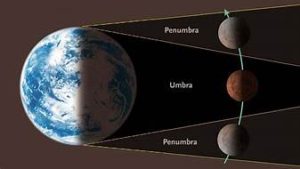
Two Conditions
Two celestial events must happen at the same time for a penumbral lunar eclipse to occur:
- The Moon must be in the Full Moon phase.
- The Sun, Earth, and Moon must be nearly aligned, but not as closely aligned as during a partial eclipse.
Not Every Full Moon Night
The reason we do not see a lunar eclipse every Full Moon night has to do with the inclination of the Moon’s orbital path. The plane of the Moon’s orbit around the Earth is inclined at an angle of 5° to the Earth’s orbital plane around the Sun, the ecliptic. The points where the two orbital planes meet are called lunar nodes. Lunar eclipses can only take place when a Full Moon occurs near a node.

WHEN AND WHERE TO SEE
The eclipse will last 4 hours and 5 minutes overall, and will be visible from Africa, Europe, Asia, Alaska, and Australia.
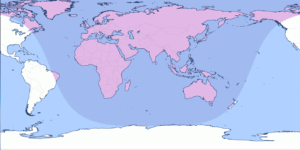
The timings of the eclipse are as follows. You will be able to see the eclipse if the Moon is up as seen from your location; but note that this penumbral eclipse will be very difficult to see in practice:
| Event | UTC Time | Time in New Delhi* | Visible in New Delhi |
| Penumbral Eclipse begins | 10 Jan, 17:07:44 | 10 Jan, 22:37:44 | Yes |
| Maximum Eclipse | 10 Jan, 19:10:02 | 11 Jan, 00:40:02 | Yes |
| Penumbral Eclipse ends | 10 Jan, 21:12:19 | 11 Jan, 02:42:19 | Yes |
During this eclipse the Moon will be just 3 days before perigee, making it relatively large. At maximum eclipse it will be 0.545° in apparent diameter, which is 2.6% larger than average.
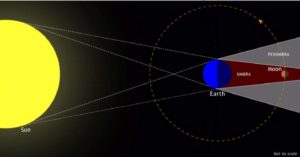
PRECAUTIONS TO BE TAKEN
There are no precautions you need to take when observing a lunar eclipse, since the moon is never bright enough to hurt our eyes like the sun is. A blood moon is one of the few opportunities we have to see both the moon and the stars in the sky at the same time, since the moon is usually too bright.
situs togel
toto togel
toto togel
toto slot
toto slot
toto togel
situs togel
data macau
prediksi hk
prediksi sdy
situs toto
toto slot
situs toto
situs toto
pam4d
situs togel
gimbal4d
pam4d
pam4d
gimbal4d
sangkarbet
sangkarbet
gimbal4d
situs toto
situs toto
toto slot
situs toto
toto slot
situs toto
situs toto
toto slot
situs toto
situs toto
toto slot
pafikotatambrauw.org
pafikotapegununganbintang.org
pafikotamimika.org
pafikotamamujutengah.org
pafikotamalukutenggara.org
pafikotabovendigoel.org
pafikotamalukutengah.org
pafikotalannyjaya.org
pafikotakepulauanyapen.org
pafikotaintanjaya.org
pafikotaburuselatan.org
pafikotabiaknumfor.org

